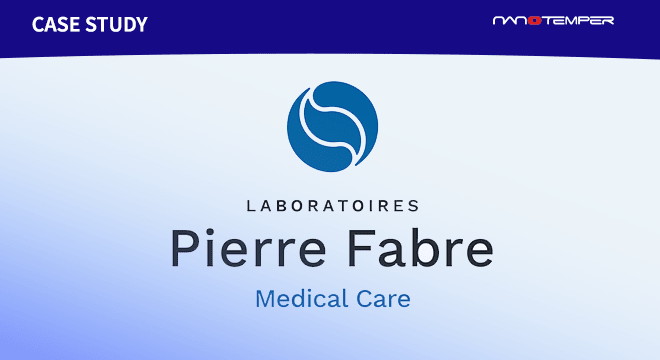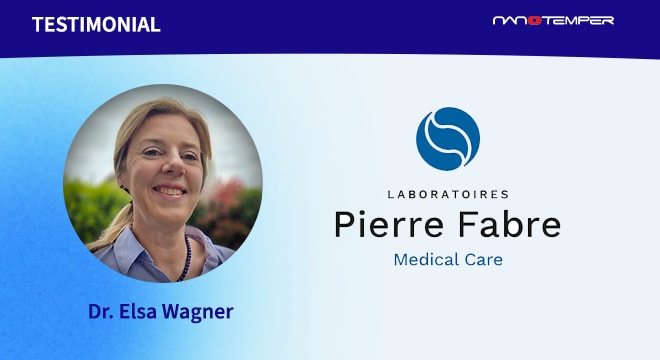Chemical denaturation is becoming increasingly popular in the drug development process. On one hand, it allows for determining the free enthalpy (ΔG) of unfolding of monoclonal antibodies (mAbs), which directly correlates with the fraction of unfolded protein in solution and provides thermodynamic insight into mAb stability. On the other hand, it is a tool to predict the aggregation propensity and aggregation mechanism of mAbs. Chemical denaturation experiments are performed by measuring the fraction of unfolded protein (e.g. by measuring the F350/F330 ratio) in a gradient of denaturant concentrations. Common denaturants are 0-8 M GuaHCl, 0-10 M Urea. In order to record a sufficient number of data points for fitting, at least 24 different denaturant concentrations should be measured. In order to derive correct ΔG values from chemical denaturation experiments, it is of major importance to use fully equilibrated samples. The time required for full equilibration is however often unknown, and some of the current commercial instrument solutions to detect chemical unfolding combine sample preparation and detection, which might lead to unsufficient incubation times.
Want to see more
biologics content?
See more related content

This guide provides an overview of the key analytical parameters obtained with Prometheus Panta, their definitions and practical relevance for protein characterization and drug development.

Learn about Prometheus Panta C: A next-generation stability characterization platform that's helping biomanufacturers bring automation into the analytical core of their development and process control

Dr. Marius Müller of Johnson & Johnson Innovative Medicine shares insights from questions about the use of nanoDSF™ technology for ID-testing and at several late stages of biotherapeutics development.

NanoTemper Technologies announces the launch of Prometheus Panta C, a solution designed to meet the evolving needs of biopharmaceutical development—from preclinical phase to commercial manufacturing.

Expert Marius Müller, PhD, Team Lead at Johnson & Johnson Innovative Medicine, shares insights into three significant trends that have potential to reshape the biopharma and biomanufacturing industry

Marius, a biophysics expert at Johnson & Johnson Innovative Medicine, shares his insights into this rapidly evolving field of biomanufacturing.

Learn how to enhance your lab's efficiency with Prometheus Panta, from using capillary chips for high-throughput sample loading to solutions for seamless integration in automated workflows
 31:28
31:28Watch this webinar to discover how Dr. Marius Müller from Johnson & Johnson Innovative Medicine, uses nanoDSF, a high-throughput method that assesses protein stability, for drug substance ID testing.

Use this curated list of must-attend 2025 biologics conferences to plan your year. Find out when and where each conference takes place, who will be there, and what you can expect.
 26:58
26:58Watch this webinar about approaches and insights into bispecific formulation development and screening with Prometheus Panta for thermal and colloidal stability characterization of biotherapeutics.
Join this conversation to gain insight into how the Analytical and Formulation Sciences team at Thermo Fisher Scientific approaches stability assessment of biologic, and how the Prometheus Panta helps

Each excipient class helps stabilize biologics – from monoclonal antibodies to vaccine antigens – in different ways. Read on to learn more about some of the most important excipients for...
Learn how to identify optimal buffer conditions during pre-formulation, with multi-parameter stability characterization from Prometheus Panta, a tool to collect thermal and colloidal data while saving

Learn how Pierre Fabre uses multi-parameter stability measurements of mAb libraries on Prometheus Panta to streamline developability platforms, reducing complexity, cost, and sample consumption.

Read why scientist Dr. Elsa Wagner chose the Prometheus Panta instrument with simultaneous measurements of DLS, nanoDSF, SLS and backreflection for developability assessment of their mAbs candidates.
 16:24
16:24Get developability profiles for monoclonal antibodies with stability data from Prometheus Panta to inform on rational design and selection of therapeutic constructs that will succeed in the clinic.

The work of formulation scientists is critical to de-risk the entire development process for biologics. Read on to learn more about what to consider about your buffer components for...
Characterize the developability of antibody-drug conjugates: Multi-parameter stability assessment with Prometheus Panta makes it possible to examine multiple aspects of ADC stability in parallel.

Learn how it’s possible to use the Prometheus Panta to extrapolate how your low concentration sample will behave once it’s scaled up and at higher concentrations used for clinical administration.
For antibody-drug conjugate (ADC) development, scientists rely on stability experiments using fluorescence and light scattering techniques to predict the conjugated molecule's behavior.


